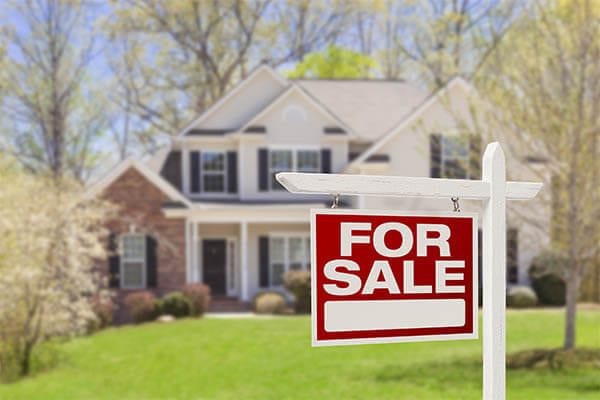Dorothy surely wasn’t thinking of life in a COVID-19 pandemic when she clicked those heels in the “Wizard of Oz” and opined that ‘there’s no place like home.’
But her words have proven true in 2020. In times of a contagious virus and high unemployment, home ownership and home sales are increasing. That may seem illogical, but not everything in life follows logically in the bizarro world of the coronavirus.
An Unexpected Boost in Home Sales
The National Association of Realtors (NAR) reports that home ownership is at its highest rate since 2008. Home sales saw a 20.8% month-over-month increase in June of 2020.
Lawrence Yung, Chief Economist at the NAR, called the June numbers “quite spectacular.”
“The number was so large I had to check my database to see when we had such an increase in the past,” Yun said.
The answer: Never.
Since the NAR started keeping this data in 1968, no month-over-month increase has been higher.
“As long as the economy remains open,” Yun said, “the buyers are just ready to go.”
New home sales increased to its highest total in 13 years. And in July, mortgage applications for home purchases hit an 11-year high.
Though it is also true that home sales are down 11.3% on an annual basis, the monthly increase matters; in a time of pandemic and high unemployment, people are buying homes at an eye-opening rate.
Why Home Sales Are Increasing During the Pandemic
The reasons for the spur involve the Federal Reserve’s response to the pandemic. One of the key moves the Fed made to jumpstart the economy was to lower its interest rates to zero early in 2020. That has borrower’s rates at historic lows.
Bankrate.com reports in early August that the average rate on a 30-year fixed mortgage is 3.03%. Lenders don’t provide free money, but with rates that low it’s close. On a $300,000 home purchase, a 2% difference in interest rates can save a homeowner more than $100,000 over the 30-year life of a loan.
The pandemic also has affected buyers’ thinking. Forced to stay at home, younger buyers realized their city apartment was small, especially for those in need of a home office. Homes provide space and yards, which can help when social distancing is required. Worldwide, the trend is no different. Homes in Madrid with a terrace, garden or large common area are growing in demand.
Monica Alistar, Communications Strategist for point2homes.com, pointed out that the typical post-lockdown homebuyer is a millennial woman aged 25-34 who is seeking more space and Is willing to pay more. Condos have dropped in popularity, but popularity of homes with outdoor amenities like pools, patios and decks increased.
Interest in moving to rural areas also has grown. Realtor.com reports that property views in rural areas increased by 34% from June of 2019 through June of 2020. People want space and are ready to get away from congestion.
This growth is not true for all economic levels. Pandemic job losses hit largely in the service sector – think closed hotels, restaurants and bars — but those workers are more likely renting because many are not at a high-enough income level to qualify for a mortgage.
Those who kept their jobs are seeking more space, for themselves and their families. As the work-at-home movement becomes more permanent, the importance of the home office will grow, which makes the need to reduce commuting time less important.
Should I Buy a House During the COVID-19 Pandemic?
There are concerns about how long the house-buying trend will last. Federal stimulus money ran out the end of July, and its future is dependent on the vagaries of Congressional action. The longer the virus lasts, the more difficult things may become.
Too, a record number of people have sought mortgage relief – 4.3 million in mid-June. Black home ownership also is worrisome; 28% of blacks deferred or did not pay their mortgage compared to 9% of whites. In the first week of August, 33% of homeowners failed to make their full housing payments on time.
So, is this the right time to buy a house?
Budgeting must enter into any consideration. If an individual kept his or her job and has regular income, it’s a great time to look. But anyone burdened by debt should evaluate carefully. Heavy credit-card debt, for example, may make adding a mortgage impractical; it may even make qualifying for a loan difficult.
If you are ready to jump in, be aggressive when you find what you like. Low inventory and high demand make it a seller’s market. Sellers are getting 98.8% of their asking price on average, according to Zillow. The national median home price hit a record $349,000 in July.
For those thinking about buying a home who are financially positioned to do so, there may not be a better time. However, you must be willing to act quickly and decisively. Rates are low and the market is churning. Attitude and aggressive action mean the right home can be found with the right amenities.
We may not be in Kansas anymore, Toto, but we surely can find a home wherever we are.
Sources:
- Cardinale, John (2020, July 28) Home sale statistics. Retrieved from https://kbjr6.com/2020/07/28/coronavirus-pandemic-helps-real-estate-market-soar/
- Karlsson, Carl (2020, July 29) Madrid facts. Retrieved from
- https://worldcrunch.com/business-finance/rent-due-what-covid-19-could-mean-for-real-estate-market
- Passy, Jacob (2020, July 29) Homeownership rate statistics. Retrieved from
- https://www.marketwatch.com/story/the-homeownership-rate-jumps-to-the-highest-level-since-2008-but-looks-could-be-deceiving-2020-07-28
- Robb, Greg (2020, July 24) Statistics on new home sales. Retrieved from https://www.marketwatch.com/story/new-home-sales-surge-in-june-and-are-now-above-previous-cycle-high-hit-at-start-of-2020-2020-07-24?mod=article_inline
- Passy, Jacob (2020, July 22) Existing home sale statistics. Retrieved from
- https://www.marketwatch.com/story/existing-home-sales-rebound-strongly-in-june-from-pandemic-fueled-lows-but-will-the-recovery-be-sustainable-in-the-long-term-2020-07-22?mod=article_inline
- Chinni, Dante (2020, July 19) Rural home statistics. Retrieved from
- https://www.nbcnews.com/politics/meet-the-press/rural-real-estate-prices-rise-people-consider-leaving-cities-n1234309
- Stephan, Graham (2020, August 3) Statistics, breakdown on housing markets in general. Retrieved from
- https://www.youtube.com/watch?v=munCnxyuq2w
- Long, Heather (2020, July 27) Home sale statistics. Retrieved from
- https://www.washingtonpost.com/business/2020/07/27/housing-inequality-coronavirus/
- Ostrowski, Jeff (2020, August 5) Mortgage rate and home sale statistics. Retrieved from
- https://www.bankrate.com/mortgages/mortgage-rates-fall-even-lower-this-week/
- Hopulele, Andra (2020, August 4) Profile of home buyers. Retrieved from
- https://www.point2homes.com/news/us-real-estate-news/the-2020-us-homebuyer-profile.html








